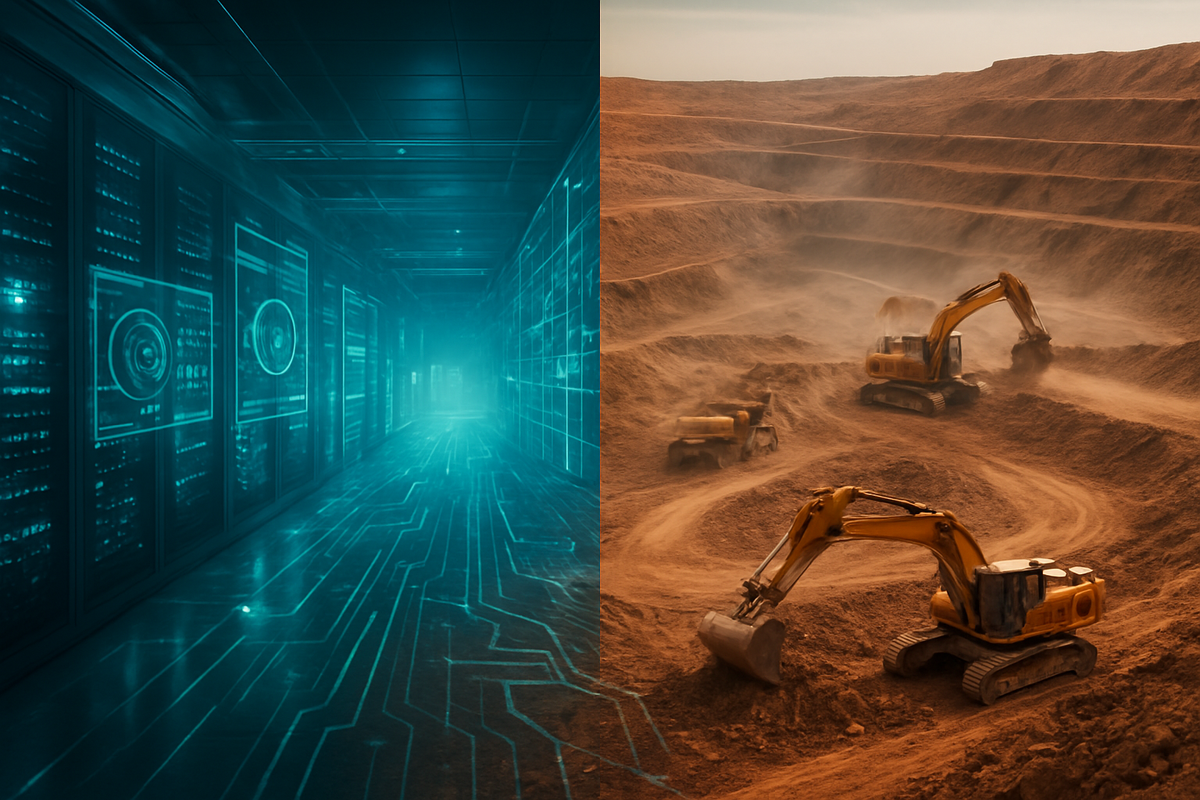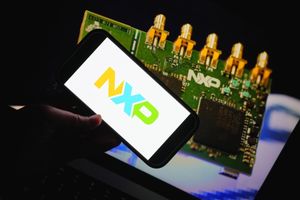
The artificial intelligence revolution, often perceived as a purely digital frontier of algorithms and data, is quietly forging an unexpected and robust demand for one of the oldest industrial commodities: iron ore. As AI technologies rapidly advance and integrate into every facet of modern life, the physical infrastructure required to support this digital transformation is growing at an unprecedented pace. This surge in data centers, energy grids, and manufacturing capabilities, all heavily reliant on steel, is translating into a significant and unforeseen boon for the global mining sector and, specifically, for iron ore. This surprising connection highlights how the digital future is profoundly intertwined with the foundational materials of the industrial age, creating new demand drivers that could reshape commodity markets.
AI's Insatiable Appetite for Steel: The Physical Reality of a Digital Dream
The seemingly abstract world of artificial intelligence is built upon a very tangible foundation, one that demands vast quantities of steel, and by extension, iron ore. The core of this demand stems from the explosive growth of hyperscale data centers—the colossal computing fortresses that house the servers, cooling systems, and networking equipment essential for AI's operation. These facilities are not merely server rooms; they are industrial-scale constructions, each requiring immense amounts of structural steel, rebar for foundations, and steel components for their intricate internal infrastructure, including server racks and heavy-duty HVAC systems designed to manage the extraordinary heat generated by AI processors. Industry estimates suggest that a single hyperscale AI data center can demand upwards of 20,000 tons of steel for its construction.
The timeline leading to this moment has seen a dramatic acceleration in data center development. Over the past five years, as AI models grew in complexity and computational needs, the global market for data center construction has experienced a robust expansion, with projections indicating a compound annual growth rate (CAGR) between 7.5% and 8.1% through 2030. This consistent growth trajectory directly correlates with the increasing demand for steel-intensive structures. Key players in this infrastructural boom include major tech giants like Microsoft (NASDAQ: MSFT), Google (NASDAQ: GOOGL), and Amazon (NASDAQ: AMZN), who are aggressively expanding their cloud and AI infrastructure, alongside specialized data center developers and construction firms.
Beyond the data centers themselves, the energy requirements of AI are staggering, creating a secondary, yet equally significant, demand for steel. Training and operating sophisticated AI models can consume more electricity than entire small cities, necessitating a massive expansion and upgrade of global energy infrastructure. This means new power generation facilities—whether natural gas, solar, or wind—all of which are inherently steel-intensive. Wind turbines, solar panel mounting structures, and the internal components of power plants rely heavily on steel. Furthermore, the expansion of transmission and distribution networks to deliver this power to new data centers requires thousands of miles of new transmission lines, substations, and transformers, all of which use substantial amounts of steel for towers, poles, and casings. Initial market reactions from the mining and steel sectors have been cautiously optimistic, with analysts beginning to factor in this new, unexpected demand driver into their long-term forecasts for iron ore and steel prices.
Market Movers: Winners and Losers in the AI-Driven Iron Ore Boom
The burgeoning demand for iron ore, propelled by the artificial intelligence infrastructure build-out, is poised to create clear winners and losers across the mining, steel, and even energy sectors. At the forefront of the beneficiaries are the world's largest iron ore miners. Companies like BHP Group (ASX: BHP), Rio Tinto (ASX: RIO), and Vale S.A. (NYSE: VALE), which dominate global iron ore production, stand to gain significantly from sustained or increased demand. Their extensive mining operations and established supply chains position them to capitalize directly on any uplift in steel production driven by AI. Increased demand could lead to higher iron ore prices, boosting their revenues and profitability. Similarly, major steel producers such as ArcelorMittal (NYSE: MT) and Nippon Steel Corporation (TYO: 5401) will see heightened demand for their products, particularly for structural steel and specialized alloys used in data center construction and energy infrastructure.
The ripple effect extends to companies involved in the construction and engineering of these massive projects. Firms specializing in large-scale industrial construction, particularly those with expertise in data centers and energy grids, will experience a surge in contracts. Manufacturers of heavy machinery and mining equipment, such as Caterpillar Inc. (NYSE: CAT), could also see increased sales as miners invest in expanding capacity and optimizing operations to meet demand.
However, the "losers" are less about direct financial losses and more about those who fail to adapt or capitalize on the trend. Smaller, less efficient iron ore producers might struggle to compete if larger players scale up quickly and achieve greater economies of scale. Companies heavily reliant on traditional, stagnant sectors of steel demand, without diversifying into infrastructure or high-tech applications, might find their growth opportunities limited. Furthermore, the immense energy demands of AI could put pressure on energy providers, particularly those reliant on older, less efficient grids or non-renewable sources, potentially leading to increased operational costs or regulatory scrutiny if they cannot meet the demand sustainably.
A New Pillar for Industrial Commodities: Wider Significance
The AI-driven demand for iron ore represents a significant paradigm shift, embedding a high-tech digital revolution within the traditional industrial commodity landscape. This event fits squarely into broader industry trends that emphasize infrastructure development and electrification. As nations globally invest in digital transformation and green energy initiatives, the underlying need for robust physical infrastructure—from smart cities to electric vehicle charging networks—already points to increased steel consumption. AI's infrastructure requirements simply add another, powerful layer to this demand, creating a sustained tailwind for industrial metals.
The potential ripple effects are far-reaching. Competitors in the mining sector may accelerate their investment in new projects or expand existing ones, leading to a new cycle of capital expenditure. Partners in the logistics and shipping industries will also see increased activity as raw materials and finished steel products are transported globally. This renewed demand could also stimulate innovation within the steel industry, pushing for more efficient, sustainable, and "green" steel production methods to meet environmental targets, potentially leading to new processing technologies that further refine iron ore utilization.
Regulatory and policy implications are also emerging. Governments worldwide, recognizing the strategic importance of AI and its foundational infrastructure, may introduce policies to streamline data center construction, incentivize domestic steel production, or invest in grid modernization. The sheer energy consumption of AI is already sparking discussions around energy policy, grid stability, and the transition to renewable energy sources, which themselves are steel-intensive. Historically, major technological shifts, such as the railway expansion of the 19th century or the electrification boom of the 20th, have consistently driven massive demand for foundational commodities like steel. The AI era, while digital, appears to be following a similar pattern, demonstrating that even the most advanced technologies rely on the tangible world.
The Road Ahead: Navigating AI's Material Demands
Looking ahead, the short-term outlook suggests a continued robust demand for iron ore as the AI infrastructure build-out accelerates. Data center construction projects often span multiple years, creating a sustained order book for steel and, consequently, iron ore. In the immediate future, we can expect to see mining companies potentially increasing their production targets and steel mills adapting their output to cater to the specific grades and types of steel required for these high-tech applications. However, supply chain bottlenecks, particularly for specialized steel components or high-voltage electrical equipment, could emerge as a short-term challenge.
In the long term, the possibilities are even more transformative. As AI becomes ubiquitous, its energy and infrastructure footprint will only grow. This could lead to a sustained, multi-decade demand cycle for iron ore, fundamentally altering its demand profile from being primarily driven by traditional construction and automotive sectors to one increasingly influenced by digital infrastructure. This might necessitate significant strategic pivots for mining companies, focusing on sustainable extraction methods and potentially even investing in downstream processing to produce "green iron" or "green steel" to meet the environmental commitments of tech giants.
Market opportunities will emerge in areas like advanced materials for cooling systems, energy storage solutions, and efficient power distribution, all of which may incorporate steel. Challenges will include managing the environmental impact of increased mining and energy consumption, securing adequate and reliable power supplies, and navigating potential geopolitical complexities around critical mineral supply chains. Potential scenarios range from a steady, managed growth in demand to a more volatile boom-and-bust cycle if infrastructure development outpaces supply or if technological shifts reduce the physical footprint of AI. Ultimately, the industry must adapt to a future where digital innovation is inextricably linked to the earth's raw materials.
A Foundation of Steel for the Digital Age: Wrapping Up
The artificial intelligence boom, far from being a purely ethereal digital phenomenon, is creating a profound and enduring demand for iron ore, the fundamental ingredient in steel. This unexpected connection highlights a critical takeaway: the digital revolution requires a physical foundation, and that foundation is built with steel. The relentless expansion of hyperscale data centers and the necessary upgrades to global energy grids to power them are translating into a significant and sustained new demand driver for this ancient commodity.
Moving forward, the market will increasingly recognize AI infrastructure as a key pillar of iron ore demand, alongside traditional sectors like automotive and construction. Investors should closely watch the capital expenditure plans of major tech companies for data center expansion, the growth trajectories of specialized data center developers, and the investment strategies of leading iron ore miners and steel producers. The commitment to sustainable practices within the tech sector will also drive demand for "green steel" and environmentally responsible mining, presenting both challenges and opportunities for the industry.
The significance of this trend cannot be overstated. It underscores that even in an age of unprecedented digital advancement, the tangible world of raw materials remains indispensable. The AI era is not just about code and algorithms; it's also about concrete, copper, and crucially, iron ore. The lasting impact will likely be a recalibration of how we perceive commodity markets, demonstrating that the future's most advanced technologies will continue to rely on the earth's most basic resources, forging an enduring link between the digital frontier and the industrial heartland.
This content is intended for informational purposes only and is not financial advice







